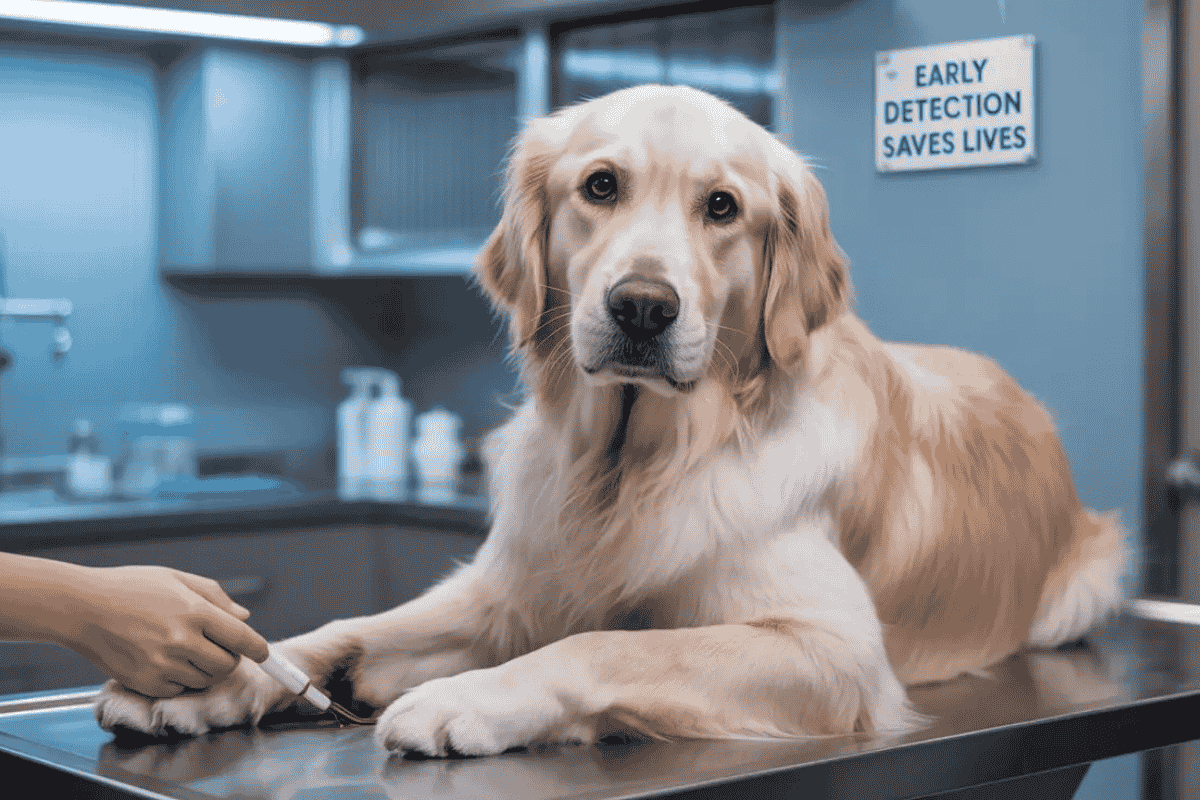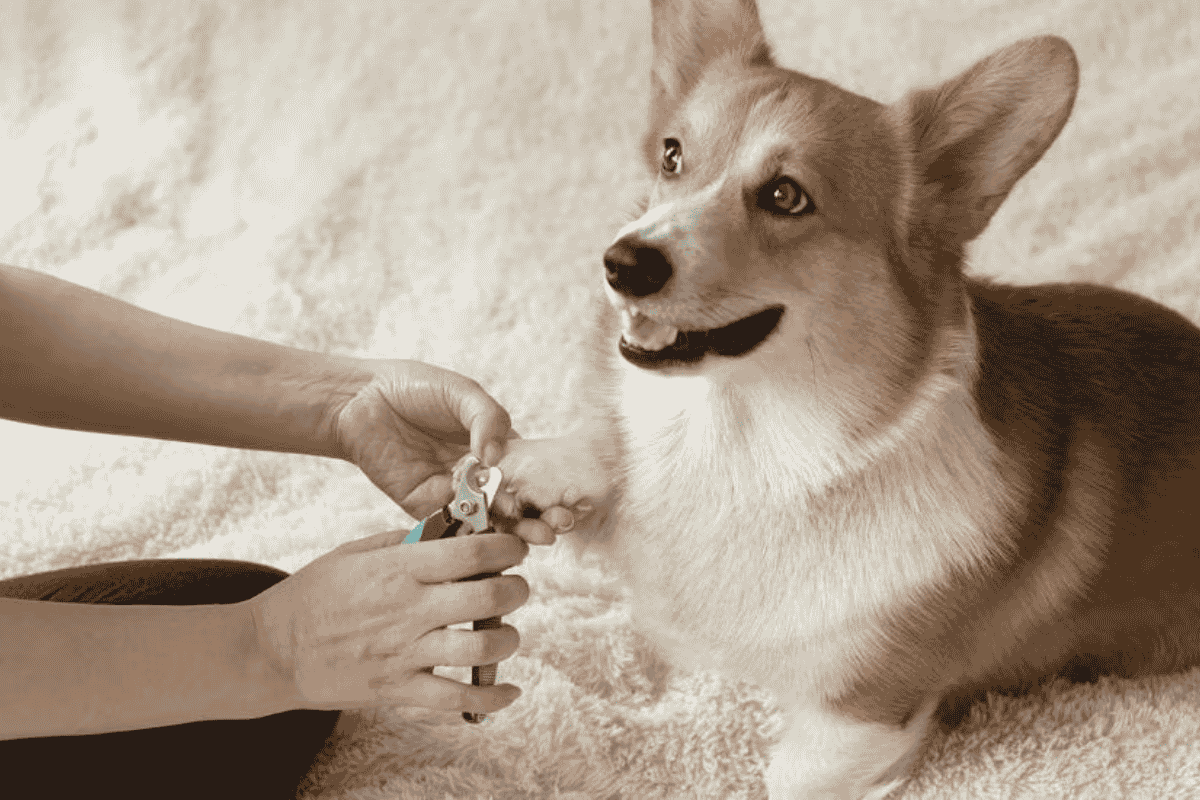Cancer screening tests for dogs are designed to detect early warning signs of cancer by analyzing abnormal particles in the bloodstream, such as nucleosomes or cell-free DNA. These particles may indicate the presence of cancer before obvious clinical symptoms appear.
Screenings are non-invasive, typically requiring just a small blood sample during a wellness exam. It’s important to note that these tests do not diagnose cancer.
Instead, they alert veterinarians to the possibility, leading to follow-up diagnostics like X-rays, ultrasounds, biopsies, or advanced imaging such as CT or MRI.
What To Expect During a Dog Cancer Screening
- Procedure: A veterinarian collects a small blood sample during a routine exam.
- Testing: The sample is analyzed in a lab using molecular or genomic testing.
- Results: Depending on the lab, results may take minutes (in-house) or a few days.
- Comfort: No sedation or anesthesia is required, and the process is typically painless.
Does My Dog Need to Be Screened?
Not every dog requires cancer screening, but several factors increase the need:
- Age: Dogs over 7 years old, particularly large or giant breeds.
- Breed risks: Golden Retrievers, Boxers, Rottweilers, and Bernese Mountain Dogs are predisposed to cancer.
- Concerning symptoms:
- Unexplained weight loss
- Growing or changing lumps
- Lethargy or decreased appetite
- Breathing difficulties or coughing
- Vomiting or diarrhea
- Limping or lameness
If your dog falls into a higher-risk category or shows any of these symptoms, your vet may recommend screening.
Why Early Cancer Detection Matters
Catching cancer early often improves outcomes dramatically. Early-stage detection allows veterinarians to intervene with surgery, chemotherapy, radiation, or alternative therapies before the disease spreads.
Benefits of early detection include:
- Better prognosis and survival rates
- Less invasive treatments with fewer side effects
- Reduced pain and improved quality of life
- Financial and emotional preparedness for families
Advancements in Dog Cancer Screening
Veterinary oncology has advanced rapidly, especially in blood-based screening technology. Some tests can now detect risks for aggressive cancers like lymphoma and hemangiosarcoma with high specificity and sensitivity.
Emerging trends include:
- Improved lab screenings: Backed by peer-reviewed research and veterinary use.
- At-home detection kits: Becoming available, though owners should use only tests recommended by licensed veterinarians.
While no screening catches every cancer, these advancements offer new hope for earlier interventions.
Providing Preventive Care for Your Dog
Cancer screenings work best as part of a holistic preventive care plan. To support your dog’s health:
- Schedule regular checkups (twice yearly for seniors, annually for others).
- Discuss breed-specific cancer risks with your veterinarian.
- Consider DNA testing if your dog’s breed is unknown.
- Ask your vet about adding cancer screening tests to routine exams.
- Monitor your dog closely for behavioral or physical changes.
- Plan ahead with pet insurance or savings for potential treatment costs.












